
The Best DNA and Ancestry Products Compared
AncestryDNA vs. MyHeritage: Which DNA Test is Best for You?
- UPDATED April 2024
Find out how AncestryDNA and MyHeritage compare with a direct head to head comparison between these two testing services.
Advertising Disclosure
Many or all of the companies featured provide compensation to us. These commissions are how we maintain our free service for consumers. Compensation, along with hours of in-depth research, determines where & how companies appear on our site.
AncestryDNA vs. MyHeritage: Comparing Two of the Most Popular DNA Kits
Ancestry.com made its way into the pop culture lexicon when it became advertising on television during the 1990s. The site claimed that it provided users with millions of resources that could help them trace their family trees and find relatives from around the world. Thanks to AncestryDNA, you can now compare your family tree with the people you’re related to via the results of your tests.
With a database that now includes more than 10 million registered users, it’s easy to see why so many people choose this DNA test. AncestryDNA is not your only option though. There are some great competitors to the market, including MyHeritage.
FEATURED GENETICS EXPERT
DNA testing takes the guesswork out of finding out who you are, where your family came from and where you still have roots today. Both of these tests give you the information that you need in an easy to read format and gives you the option of sharing your results and adding the info to other sites. You may want to consider how many people are in each database, how long it takes to get results, the overall cost and what type of information you’ll get back. We took some of the hard work out of finding out which test to take with our AncestryDNA vs MyHeritage comparison.
AncestryDNA is for
- Finding distant cousins and other matches
- Accessing genealogical research
- Seeing members who share genes and chromosomes
- Getting more information about specific regions
MyHeritage is for
- Providing a simple sample
- Uploading raw data to other sites
- Getting results fast
Pros and Cons of AncestryDNA
Before we see how AncestryDNA and MyHeritage compare in different areas, we’ll go over some of the basic pros and cons of each test. AncestryDNA wins in many categories simply because it was one of the first home DNA tests available. MyHeritage offers some nice results but doesn’t have as many registered users. Some of the pros of using AncestryDNA include:
PROS
- The database includes more than 10 million users and adds more members every day
- It gives you suggested hints and lets you view genealogical documents as a member
- You can use the online messaging system to send and receive messages to matches for free
- The site lets you link any of the genetic matches that you get to names on your family tree
- You can save your raw data and upload it to other sites
CONS
- It only offers autosomal DNA testing and does not include options for Y-DNA or mtDNA testing
- You need to pay a subscription fee to use all services
- You cannot upload raw data from other tests to compare your results
- With so many matches in the system, finding specific people is hard
The AncestryDNA test lets you click on links across the top of the page to access your family tree, view your DNA results, respond to messages and do other tasks.
Pros and Cons of MyHeritage
Don’t let the fact that MyHeritage is newer confuse you or make you think that it isn’t as effective. This newcomer has millions of users and can give you results similar to those you get from the AncestryDNA test. You can upload the raw data from AncestryDNA, 23andMe or most other testing sites and let MyHeritage compare those results. It usually takes a few weeks, but this lets you see how your results from one test compared to another. Some of the pros of using MyHeritage include:
PROS
- You can use a chromosome browser to view your results
- The site has a basic messaging system that lets you connect with family members
- It breaks down your results into 42 geographic regions
- You can submit a cheek swab
CONS
- It has a smaller database of just over one million registered users
- You cannot opt for Y-DNA or mtDNA tests
- MyHeritage doesn't include results from as many regions as other tests do

MyHeritage lets you check your messages, view DNA data and do other things once you log into your registered account.
Photo by MyHeritage
Type of Testing
One way you can compare DNA tests is with the type of testing that they use. Both MyHeritage and AncestryDNA use autosomal testing instead of mtDNA or Y-DNA testing. Those types of tests are popular with people who only want to trace one side of their family. With mtDNA, you only look at your mitochondrial DNA or the DNA that you get from your mother. This type of test cannot tell you anything about your father’s side. If you opt for Y-DNA testing, you can trace your paternal line. You can only rely on Y-DNA testing if you are male because this DNA passes from a father to his son.
Autosomal DNA gives you the chance to trace your family along both lines at the same time and get an idea of where your ancestors lived at different points. You get roughly half of your gene’s from your mother’s side and half from your father’s side. The exact mixture can vary though, which is why you shouldn’t be concerned if a sibling has slightly different results than you do. Both AncestryDNA and MyHeritage can help you find information about individual people in your family from previous generations. Once you go back six generations or more, you can get ethnicity estimates about where they lived.
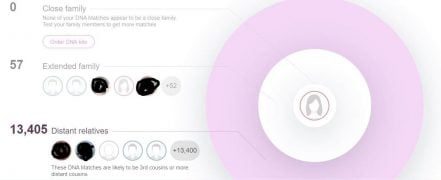
MyHeritage breaks your results down and shows you close family members followed by extended family members and distant relatives. You can click on any image to learn more.
What are Ethnicity Estimates?
One of the key pieces of information that you’ll get from either test is an ethnicity estimate. Both tests compare your genetic markers to the markers found in other samples. They look at what regions people with those markers lived in at different points and estimate when your family lived there. Depending on which test you take, you can see dozens of regions listed. AncestryDNA has a nice feature that lets you trace your family line over time. You can click on a button to see where people with your shared ancestry lived centuries ago and then watch a moving timeline that shows when they left major countries and immigrated to the United States. This feature even lets you see if you still have relatives in those foreign countries.
MyHeritage shows your results and how they compare to 42 regions across the country. Some of the other newcomers to this market have a much smaller number of regions. While this might seem like a high number, AncestryDNA leaves it in the dust because it now has 500 ethnic regions. Both companies offer a virtual map that shows you exactly what region your ancestors lived at various points.
You’ll also like that the sites update your information as its algorithms change and more information becomes available. AncestryDNA had a problem in the past where it estimated that many users had a high percentage of Scandinavian ancestry because it had such a large sample of people from neighboring regions. It used new samples and information to change the results of other users. You can log in regularly and see how your results changed. As AncestryDNA has more regions, it wins in this category.
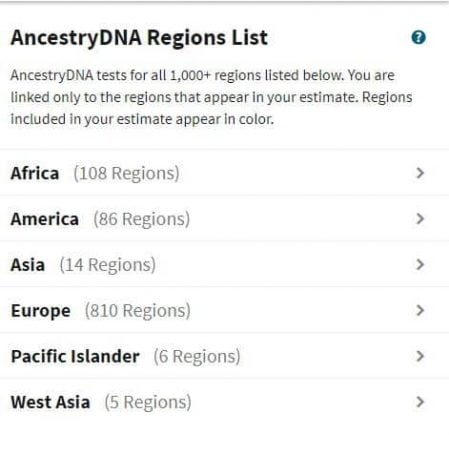
With AncestryDNA, you can view all the regions that the test looks at when analyzing your sample. When you click on each one, you can see if your family lived in any of those regions.
Shared Matches
One reason you might want to take a DNA test is that you hope to find long lost family members. The children of your aunts and uncles are your first cousins. This includes the children born to the siblings on both your mother’s and father’s side. Any children born to your great aunts and uncles are your parents’ cousins. If you and another person share the same great-grandparent, you are second cousins. You can use the chart below to easily see what relation different people are to you based on your shared ancestors.
Depending on how large and close your family is, you might already know your first cousins and second cousins. The deeper you go into your family tree, the harder it is to see how you’re related to specific names. Autosomal testing such as that done by AncestryDNA and MyHeritage makes it easy for you to see who shares your genes and where they fit on your family tree.
When you sign up for an account on either site, you need to check a box that allows others to contact you. If you come up as a match, anyone listed as a match can send you a message. You can do the same thing with those who appear as your matches, though both sites allow users to opt-out of this feature. As MyHeritage lets users upload raw data from other testing sites, it has a database of more than three million samples. Not everyone listed is a full member though and may not have the ability to contact you. AncestryDNA has results from more than 15 million users and can show you people related to you from several generations back. Both sites also include some bonus features such as:
- Letting you create a private or public family tree
- Adding information you found from other sources
- Having a photo as your avatar
- Sharing your full name or using a nickname
When members of your family sign up for MyHeritage or AncestryDNA, both sites will show them as matches and let you add them to your family tree. You’ll need to pay a fee to view the family trees that they created and to see what information is on their trees. It takes only a few clicks to transfer their data to your tree.
With MyHeritage, you can view all your shared genetic matches in a list format. When you click on any of their names, a window will appear that asks you to become a member to access that information. AncestryDNA is one of the only DNA tests that will let you view and contact matches for free. You can also use a shared matches feature that lets you see users who share two or more matches with you. This helps you identify those most closely related to you. Though both companies offer similar options for matching with users, AncestryDNA wins because it lets you do more for free and has more members.
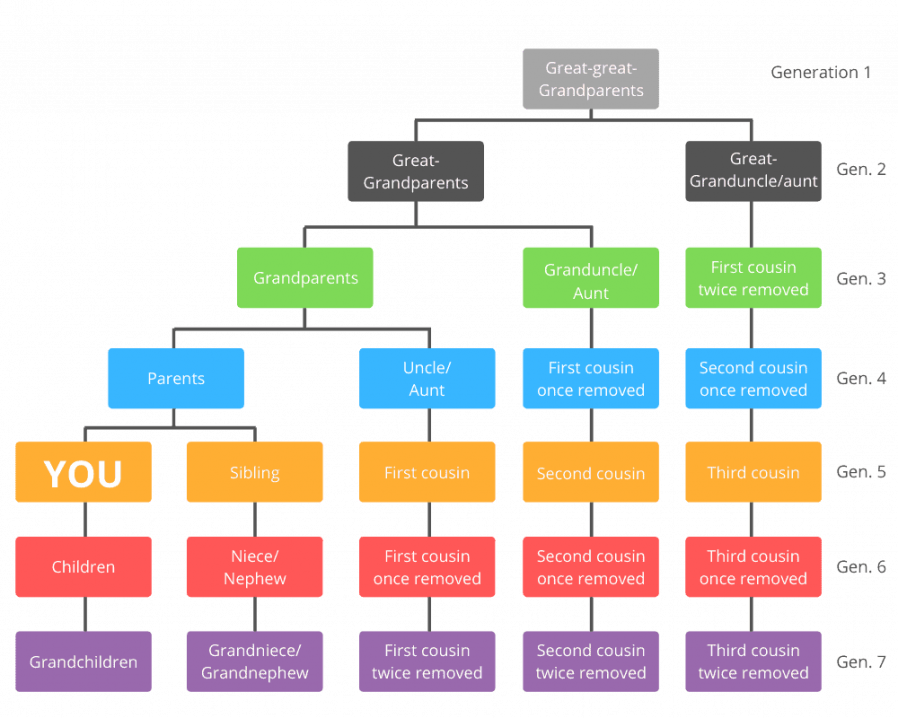
What About Raw Data?
MyHeritage and AncestryDNA make it easy for you to view the results of a DNA test because they show that information in an analysis and summary. If you want to get a look at the full data from either test, you need to download your raw data. This comes in a zip file that is hard to read. MyHeritage looks at 690,000 individual strands in your DNA vs. the more than 700,000 strands that AncestryDNA uses. Your raw data includes data on each of those strands. Even people who love science have a hard time reading through that data. Whether you choose AncestryDNA or MyHeritage, you have the chance to download your raw data and transfer it to another site for additional comparison.
You can use GEDmatch and see a 3D model of your chromosomes or upload the data to FamilyTreeDNA and see how your DNA compares to those who used that site. With AncestryDNA, you need to click on a link to tell the site that you want this data. It will then email a link that requires you click on the link and log into your account to download the file. Once you have it saved on your computer, you can upload the data to other sites.
MyHeritage also gives you the chance to download your raw data an use it on other sites. Another nice feature of this site is that you can upload your raw data from any other test to the site. If you took the MyHeritage test, you can do a direct comparison of those results. You can compare two or more tests to each other on the site, which is why MyHeritage wins this comparison. AncestryDNA does not offer a test to test comparisons.
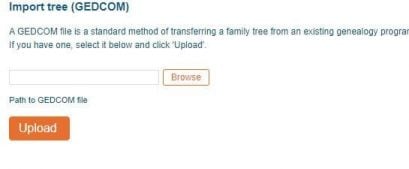
Both MyHeritage and AncestryDNA allow you to upload data from GEDCOM and similar sites.
Saliva vs. Cheek Swab
Many families today have each member take a DNA test because they want to see how their results compare. Depending on the ages of the people you want to test, you might find that MyHeritage is a better choice than the AncestryDNA test. AncestryDNA is one of the many tests that require a saliva sample. The packaging includes a vial with a lid that attaches to the top. You need to wait a few seconds for the saliva to collect in your mouth before you spit into the vial. It’s often hard to get kids to sit still and fill the cup. Some elderly people may have problems with this type of test too as they suffer from dry mouth.
MyHeritage asks for a cheek swab instead of a saliva sample. The package comes with a swab inside a sterile wrapping. Once you remove the wrapping, you just need to rub the padded end of the swab along with the interior of your cheek. It takes just 30 seconds to get a sample. The package also comes with materials designed to keep the sample safe when you send it through the mail. Cheek swabs are good for kids who have a hard time sitting still and adults who cannot produce saliva. We think that MyHeritage and AncestryDNA tie in this category because both tests are relatively easy to do.
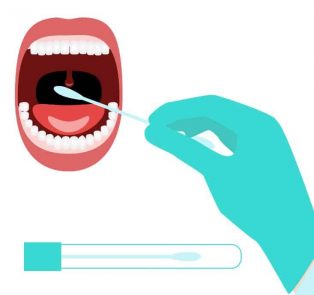
How Long Do Results Take?
By the time you reach this point in our AncestryDNA vs. MyHeritage comparison, you probably have an idea of which test you prefer but still want to know how long it takes to get your results. MyHeritage claims that it will process your sample and email you about your results in four weeks or less. According to AncestryDNA, it can take up to eight weeks before you get your results. Some of the factors that can determine how long it takes can include:
- How long it took for the lab to receive your sample
- The number of samples submitted at the same time
- Your distance from the lab
Both AncestryDNA and MyHeritage run sales around the holidays that let you get a kit for up to half off the regular price. You might find deals where you get one test for free when you buy one for the full price too. If you submit a sample during the sale season, you might wait a month or more until you get an email about your results. This is due to the hundreds or thousands of people who also took advantage of that sale. During the less busy periods, those companies can process your sample in as little as two to three weeks. As MyHeritage has a shorter estimated processing time than AncestryDNA, we have to give it the win in this category.
Tips to Make Sure the Lab Processes Your Data Quickly
- Read through the instructions carefully
- Never take a sample if you smoked, drank or ate within the last 30 minutes
- Avoid placing the cheek swab on anything around your home
- Place the sample in the return packaging as soon as possible
Cost
23andMe is one of the more expensive DNA tests because it includes a health and wellness package that adds as much as $100 to your bottom line. Both AncestryDNA and MyHeritage retail for less and offer their basic DNA kits for $99 each. If you can wait for a sale, you will often see these kits selling for $69 or less. Not only do both sites offer sales around Christmas and on Black Friday, but they also hold sales for Mother’s Day and Father’s Day. Though some reviews claimed that users paid up to $10 for shipping and handling, you generally do not need to pay a fee to ship your sample to the lab. If you go with MyHeritage, you may find that the site adds this cost to the price you pay when checking out.
One reason we like AncestryDNA is that it factors the cost of shipping and handling into your upfront price. You’ll pay one price to have the kit shipped to you and to send it to the lab. When you open the kit, you’ll see a small box inside. After you get your sample ready, you can place it inside the box and seal the flaps shut. This keeps your sample cushioned and protected until it arrives at the lab. With the MyHeritage kit, you need to figure out how to ship it to the lab, which is a hassle we didn’t like and why we named AncestryDNA the winner in terms of shipping.

MyHeritage and AncestryDNA let you quickly upload data from other testing sites and services such as GEDCOM.
Genealogical Research
If you want to take a DNA test because you reached a dead end when researching your family, AncestryDNA is the best test to take. The website includes millions of documents and can help you find ancestors who appeared in the logs on passenger lines and immigration ships. You can view the names of family members who appear in census records and military records too. Before you run out and create an account though, you should keep in mind that those features will cost extra. The site tends to email you with hints that it found based on the names and dates shown on your family tree. You’ll also see small leaves placed next to the individuals associated with those hints. When you click on any of the hints though, the site will direct you to a page that asks to choose a subscription plan before you can continue. A nice bonus is that you can get a seven-day trial for free if you add payment details to your account.
MyHeritage offers much less in the way of historical records. Though you can create a family tree, it only shows you matches if the names and other data you shared matches those found on other trees. You’ll need to pay extra to view that information. As Ancestry.com offers different plans and has more records available, we think it wins in this area.
Both AncestryDNA and MyHeritage provide everything you need to take a DNA test.
When to Use AncestryDNA
It’s helpful to take a look at some of the reasons why you might pick AncestryDNA over the MyHeritage test. The biggest reason that we could find was its database. AncestryDNA is something of the big dog in this industry. As one of the oldest tests around, it has a larger database than any other company, which means that it can provide you with more matches. Those matches appear in a list that put those closely related to you at the top. You can see your parents, siblings, aunts, uncles, grandparents and first cousins followed by your second cousins and more distant relatives at the bottom. The site might find thousands of matches based on the samples provided.
Other Reasons to Choose AncestryDNA
- It requires a small saliva sample
- The cost you pay includes shipping and handling
- Your results include ethnicity estimates for 500 regions
- The forums are easy to use and let you post messages for free
- You do not need to pay extra to contact any of your shared matches
- If you submit samples from other people, you can control their accounts, which is a good feature for young and older users
- AncestryDNA shows lets you organize your matches and view who you contacted in the past
Reasons to Choose MyHeritage
Thanks to the cheek swab that it required, MyHeritage is a good DNA test for those who want to test their parents, grandparents or children. Getting your child to sit still for a few minutes and spit into a small vial can seem impossible. Depending on the ages of your parents or grandparents, they may have a difficult time spitting into the vial or even gathering enough saliva for the sample. You can use the swab in the test kit to quickly swab the inside of their cheek in a few seconds and get the sample sent out quickly.
Other Reasons to Choose MyHeritage
- It helps you get results faster and in as little as a few weeks
- You can view users who matched with you in a smaller number of chromosomes
- It has some nice features for subscribers, including the ability to view the exact percentage of genes you share with other users
- The small number of ethnic regions can help you trace specific individuals
- You have the option of contacting any member you matched with if they opted into this feature
- MyHeritage lets you search for potential matches based on shared surnames
AncestryDNA vs. MyHeritage: Which Test Should You Take?
Choosing the right DNA test can help you find cousins who live in Africa, China, Europe and destinations around the world. It takes mere minutes to collect a sample and drop it in the mail. You can complete the test right after you wake up and get an email a few weeks later when the lab processes your test. Many shows and blogs ran stories in recent years about DNA tests and privacy concerns. They claimed that these companies sold the confidential information of users and that users needed to protect themselves. Both MyHeritage and AncestryDNA let you opt-out of sharing your information with others, including health care companies and law enforcement.
We think that these two tests rank among the top five DNA testing companies in the world right now. They both offer an affordable way to test your DNA at home and let you connect with those who share DNA markers with you. This can help you find first, second and more distant cousins as well as siblings put up for adoption and ancestors who moved to the other side of the country in the past. While MyHeritage is a good test, we think that AncestryDNA slightly comes out on top because of its huge database.





